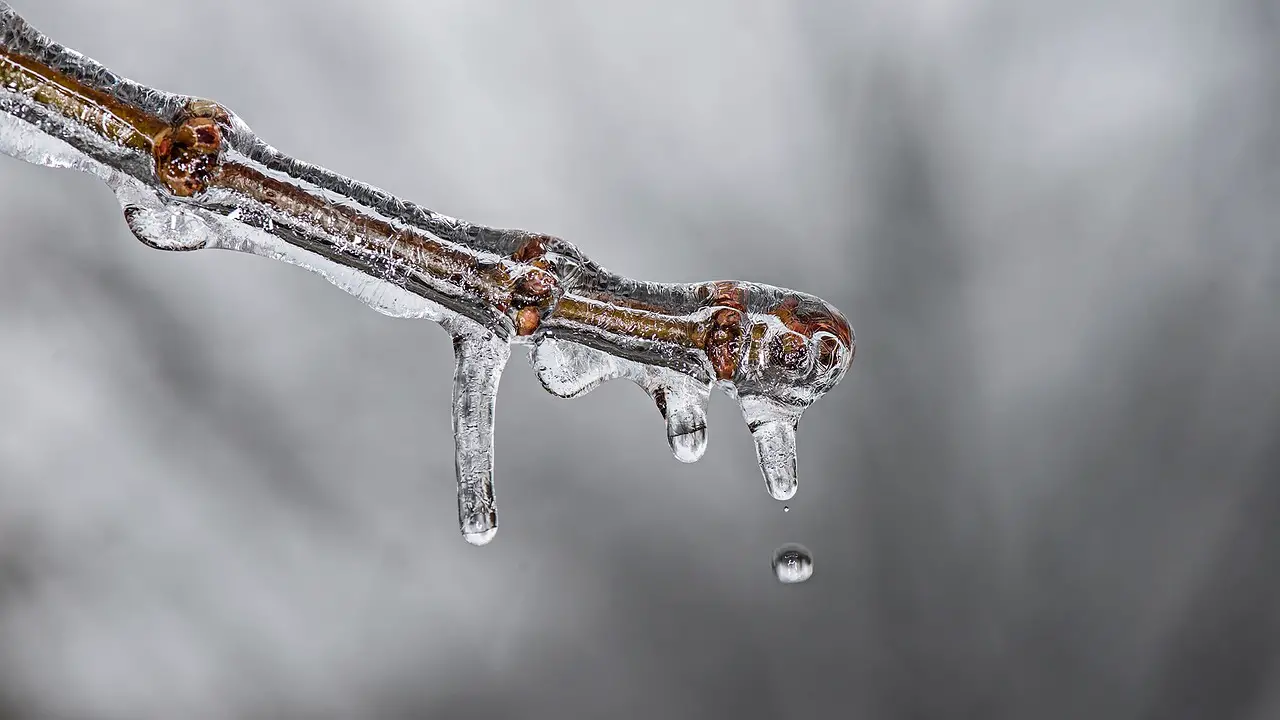Plant phenology studies the timing of seasonal events in plants, such as flowering and leafing, and how these events are influenced by climate change, particularly in relation to insects and gardening practices. Understanding these relationships is crucial for adapting gardening strategies to changing environmental conditions.
Phenology is a critical aspect of ecology and agriculture. It refers to the study of periodic plant and animal life cycle events, and how these are influenced by seasonal and interannual variations in climate. This field has gained increasing attention due to the impacts of climate change on ecosystems around the world. As temperatures rise, the timing of flowering, fruiting, and leafing in plants is shifting, which can have cascading effects on insect populations that rely on these plants for food.
Understanding Plant Phenology

Plant phenology is influenced by various environmental factors, including temperature, precipitation, and sunlight. These factors dictate when plants bloom, produce leaves, and set seeds. The timing of these events is crucial not only for the plants themselves but also for the insects that depend on them. For example, many pollinators, such as bees and butterflies, rely on specific flowering times to gather nectar and pollen.
In recent years, studies have shown that climate change is altering these natural timings. Warmer temperatures can lead to earlier flowering times in many plant species. This shift can create mismatches between the life cycles of plants and their associated insects. A prime example is when plants bloom before their pollinators emerge from winter dormancy, leading to reduced pollination success and lower plant reproduction rates.
Key findings in plant phenology research show:
| Phenological Event | Typical Timing | Impact of Climate Change |
|---|---|---|
| Flowering | Spring | Occurs earlier with rising temperatures |
| Leaf Emergence | Spring | Can lead to extended growing seasons |
| Seed Dispersal | Late Summer to Fall | Mismatches with seed predators |
The implications for gardeners are significant. By understanding plant phenology, gardeners can make informed decisions about planting times, crop selection, and pest management. For instance, planting native species that have co-evolved with local insect populations can enhance ecological resilience. Additionally, gardeners can track local climate patterns to optimize planting schedules.
The Role of Insects in Plant Phenology
Insects play a pivotal role in plant phenology. They are not only pollinators but also herbivores that can influence plant growth and reproductive success. The timing of insect activity is closely tied to the phenological events of plants. For example, if a plant species flowers earlier due to warmer temperatures, but its primary pollinators do not emerge until later, this can hinder successful reproduction.
Moreover, some insects are responsible for controlling plant pests. If their life cycles are disrupted due to changes in plant phenology or climate conditions, it may lead to increased pest populations, which can further affect plant health. Understanding these relationships helps gardeners create strategies that align their gardening practices with the natural rhythms of both plants and insects.
In summary, the interplay between plant phenology, insects, and climate change reveals a complex web of interactions that gardeners must navigate. By staying informed about these dynamics, gardeners can adapt their practices to ensure healthy and productive gardens in an era of rapid environmental change.
Climate Change and Its Impact on Plant Phenology
Climate change presents one of the most significant challenges to plant phenology. As global temperatures rise, the timing of seasonal events in plants is becoming increasingly unpredictable. This unpredictability poses risks not only to plant species but also to ecosystems and agricultural practices worldwide.
One major effect of climate change is the shift in temperature patterns. Warmer winters and hotter summers can lead to altered flowering times and extended growing seasons. For many plant species, this means:
- Earlier Budding: Many trees and shrubs are showing signs of budding and flowering earlier in spring.
- Extended Growing Seasons: Some plants may benefit from longer periods of growth, allowing for multiple harvests within a single season.
- Increased Stress: Conversely, higher temperatures can lead to heat stress, affecting plant health and yield.
Phenological Responses to Temperature Changes
Research indicates that different plant species respond to temperature changes in varied ways. Some species are more resilient, while others may struggle to adapt. Understanding these differences is crucial for gardeners and farmers. Here are some notable responses:
- Deciduous Trees: These trees are often blooming earlier, which can result in mismatches with their pollinators.
- Perennial Plants: Some perennials may start to flower sooner, yet their seeds might not mature before adverse weather conditions arrive.
- Annual Plants: Many annuals may complete their life cycles faster, potentially leading to lower yields if environmental conditions turn unfavorable.
The Interconnectedness of Climate and Insect Life Cycles
The relationship between climate change and insect life cycles is equally complex. Insects, being ectothermic, are directly affected by temperature fluctuations. As temperatures rise, insect populations may experience rapid growth. This can lead to several outcomes:
- Increased Pest Populations: Warmer climates can facilitate the proliferation of pests, which may harm plants.
- Altered Migration Patterns: Many insects are migratory. Changes in climate can affect their migration routes and timings, impacting pollination.
- Phenological Mismatches: As previously noted, if insects emerge too early or too late compared to their food sources, it can disrupt ecological balance.
Case Studies of Insect Responses
Several studies have documented how specific insect populations have changed in response to climate change. For example:
- Bumblebees: Research shows that bumblebee populations are emerging earlier in the spring. This can lead to mismatches with early-flowering plants.
- Butterflies: Many butterfly species are now appearing earlier in the season, which could affect their availability as pollinators.
- Agricultural Pests: Certain crops are facing increased pressure from pests like aphids that thrive in warmer conditions.
Gardening Adaptations in Response to Climate Change
Given the challenges posed by climate change on both plants and insects, gardeners can adopt several strategies to adapt their practices. These adaptations can help mitigate negative impacts while promoting biodiversity:
- Selecting Native Plants: Native species are often more resilient to local climate variations and provide essential habitat for local insects.
- Diverse Planting: Incorporating a variety of plants can attract different insect species, promoting a balanced ecosystem.
- Monitoring Weather Patterns: Keeping track of local weather changes can help gardeners make timely decisions about planting and maintenance.
By understanding the interplay between plant phenology, climate change, and insect dynamics, gardeners can create more resilient and productive gardening practices that contribute positively to the environment.

Gardening Strategies for Climate Resilience

As climate change continues to reshape our environment, gardeners need effective strategies to adapt their gardening practices. By implementing specific techniques, they can promote plant health, enhance biodiversity, and ensure sustainable gardening practices in the face of changing climatic conditions.
Soil Health and Management
Healthy soil is the foundation of a thriving garden. As climate patterns shift, maintaining soil health becomes even more critical. Here are some essential practices for enhancing soil resilience:
- Organic Matter Addition: Incorporating compost and organic mulch can improve soil structure, enhance moisture retention, and provide essential nutrients.
- Cover Crops: Planting cover crops during off-seasons can prevent soil erosion, suppress weeds, and improve soil fertility.
- No-Till Gardening: Reducing tillage helps maintain soil structure and supports beneficial organisms that contribute to soil health.
Water Conservation Techniques
With changing precipitation patterns, water conservation becomes crucial. Implementing effective irrigation strategies can help maintain plant health while conserving water:
- Drip Irrigation: This efficient method delivers water directly to the plant roots, minimizing evaporation and runoff.
- Rainwater Harvesting: Collecting rainwater for irrigation can reduce reliance on municipal water supplies and lower costs.
- Mulching: Applying organic mulch around plants helps retain soil moisture and suppress weeds, reducing the need for frequent watering.
Seasonal Planting Adjustments
Understanding the seasonal dynamics of plant growth is vital for adapting gardening practices. As climate patterns shift, gardeners may need to adjust planting schedules:
- Early Planting: In some regions, warmer springs may allow for earlier planting of certain crops. Gardeners should monitor local climate trends to optimize planting times.
- Succession Planting: This technique involves planting multiple crops in the same space throughout the growing season, maximizing yield and minimizing waste.
- Season Extension: Utilizing row covers or greenhouses can extend the growing season, allowing for the cultivation of plants that may not typically thrive in local conditions.
Choosing Climate-Resilient Varieties
Selecting appropriate plant varieties is crucial in adapting to climate change. Gardeners should consider the following:
- Drought-Tolerant Plants: Opting for plants that require less water can help gardens thrive during dry spells. Species such as succulents and native perennials often have lower water needs.
- Pest-Resistant Varieties: Some plants possess natural resistance to pests, reducing the need for chemical interventions. Researching these varieties can lead to healthier gardens.
- Climate-Adapted Species: Selecting species that are well-suited to current and anticipated future climates ensures better survival rates and productivity.
Community Engagement and Knowledge Sharing

Gardening does not have to be a solitary endeavor. Community engagement can enhance knowledge sharing and foster resilience against climate change:
- Community Gardens: Participating in community gardening initiatives allows gardeners to share resources, knowledge, and labor while fostering social connections.
- Workshops and Educational Programs: Joining local workshops focused on sustainable gardening practices can provide valuable insights into adapting to climate challenges.
- Online Forums and Social Media Groups: Engaging with online communities can help gardeners exchange tips, share experiences, and stay informed about best practices in climate adaptation.
By leveraging these strategies, gardeners can enhance their resilience to climate changes while contributing to healthier ecosystems. Embracing sustainable practices not only benefits individual gardens but also supports broader environmental goals in the face of ongoing climatic shifts.
Future Directions in Plant Phenology and Gardening
As the study of plant phenology continues to evolve, researchers are exploring new methods to better understand the intricate relationships between plants, insects, and climate change. These advancements can significantly impact gardening practices and ecological conservation efforts. Some areas under investigation include:
- Technological Innovations: The use of technology, such as remote sensing and climate modeling, is providing deeper insights into how climate change affects plant life cycles and insect populations. Drones and satellite imagery are being utilized to monitor plant health and growth patterns over large areas.
- Citizen Science Initiatives: Engaging the public in scientific research through citizen science can help gather valuable data on local plant and insect phenology. This information can be critical for understanding regional climate impacts and guiding local gardening practices.
- Genetic Studies: Research into the genetic adaptations of plants to changing climates can help identify resilient traits. This knowledge can be applied to breeding programs aimed at developing new varieties that are better suited to future conditions.
The Importance of Biodiversity
Biodiversity plays a crucial role in the resilience of ecosystems. Diverse plant communities can support a wider range of insects, which in turn enhances pollination and pest control services. Encouraging biodiversity in gardens can lead to healthier plants and better yields. Some strategies for promoting biodiversity include:
- Planting Pollinator Gardens: Including a variety of flowering plants that bloom at different times can attract diverse pollinators throughout the growing season.
- Creating Habitat Corridors: Designing gardens that connect with natural areas can facilitate the movement of wildlife and promote genetic diversity among plant and insect populations.
- Utilizing Companion Planting: This practice involves growing certain plants together to enhance growth, deter pests, or attract beneficial insects.
Final Thoughts
The interplay between plant phenology, climate change, and insect dynamics is undeniably complex. As gardeners, understanding these relationships equips us with the knowledge necessary to adapt our practices for a changing world. By employing sustainable gardening techniques, selecting appropriate plant varieties, and fostering community engagement, we can mitigate the effects of climate change on our gardens and local ecosystems.
Ultimately, the pursuit of resilient gardening practices is not only about ensuring food security or maintaining aesthetic landscapes; it is about contributing to the preservation of biodiversity and supporting ecosystems that sustain life. Through informed choices and collaborative efforts, gardeners can play a significant role in shaping a more sustainable future.
As we move forward, it is essential to remain vigilant and proactive in our gardening endeavors. By continuously learning from nature and adapting our strategies, we can cultivate gardens that thrive amidst the challenges posed by climate change while nurturing the delicate balance of our ecosystems.
